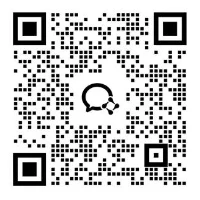What are the Design Features of RU Cross Roller Bearings?
RU Cross Roller Bearings are specialized precision components designed to provide exceptional performance in various industrial applications. These bearings are characterized by their unique construction, which incorporates cylindrical rollers arranged in a perpendicular pattern between two raceways. This design allows for high load capacity, rigidity, and accuracy, making RU Cross Roller Bearings ideal for use in precision machinery, robotics, and other demanding environments.

How do RU Cross Roller Bearings differ from traditional ball bearings?
RU Cross Roller Bearings represent a significant advancement in bearing technology compared to traditional ball bearings. The primary distinction lies in their fundamental design and the resulting performance characteristics:
1. Roller Configuration: Unlike ball bearings that use spherical balls, RU Cross Roller Bearings employ cylindrical rollers. These rollers are arranged in a "V" configuration, with each roller positioned at right angles to its adjacent rollers. This cross-arrangement allows for improved load distribution and greater stability.
2. Contact Area: One of the most significant advantages of RU Cross Roller Bearings is the increased contact area between the rollers and the raceways. While ball bearings have point contact with the races, cross roller bearings have line contact. This larger contact area results in higher load-carrying capacity and improved rigidity.
3. Load Capacity: Due to their design, RU Cross Roller Bearings can handle higher loads in both radial and axial directions compared to similarly sized ball bearings. This makes them particularly suitable for applications where space is limited but load requirements are high.
4. Rotational Accuracy: The cross-roller design provides superior rotational accuracy and reduced runout compared to ball bearings. This is because the roller arrangement minimizes the potential for skewing or misalignment during operation.
5. Friction Characteristics: While ball bearings generally have lower friction at high speeds, RU Cross Roller Bearings excel in applications requiring smooth motion at low to moderate speeds. The rolling motion of the cylindrical rollers contributes to reduced friction and smoother operation in these conditions.
6. Stiffness: RU Cross Roller Bearings offer higher stiffness compared to ball bearings. This increased rigidity is crucial in precision machinery where maintaining precise positioning is essential.
These differences make RU Cross Roller Bearings the preferred choice in applications requiring high precision, rigidity, and load capacity within a compact design envelope. Industries such as semiconductor manufacturing, medical equipment, and aerospace often rely on the unique characteristics of cross roller bearings to achieve the required performance in their precision machinery.
What are the key advantages of using RU Cross Roller Bearings in precision machinery?
RU Cross Roller Bearings offer several significant advantages that make them particularly well-suited for use in precision machinery. Understanding these benefits helps engineers and designers make informed decisions when selecting components for high-performance applications:
1. High Load Capacity: One of the primary advantages of RU Cross Roller Bearings is their exceptional load-carrying ability. The cylindrical rollers provide a larger contact area with the raceways compared to ball bearings, allowing them to support higher loads in both radial and axial directions. This high load capacity is crucial in precision machinery where components may be subjected to varying and complex load conditions.
2. Improved Rigidity: The cross-arrangement of rollers and the increased contact area result in superior stiffness. This enhanced rigidity is essential in maintaining precise positioning and minimizing deflection under load, which is critical in applications such as machine tool spindles, rotary tables, and robotic arms.
3. Enhanced Rotational Accuracy: RU Cross Roller Bearings provide excellent rotational accuracy due to their design. The crossed roller arrangement minimizes runout and ensures smooth, precise motion, which is vital in applications like semiconductor manufacturing equipment and optical inspection systems.
4. Compact Design: These bearings offer a high load capacity and stiffness within a relatively compact package. This space-saving characteristic is valuable in applications where design envelopes are limited, allowing engineers to create more compact and efficient machinery.
5. Reduced Friction and Smooth Operation: The rolling motion of the cylindrical rollers, combined with the optimized raceway design, results in lower friction compared to some other bearing types. This leads to smoother operation, especially at low to moderate speeds, which is beneficial in precision positioning systems and sensitive instruments.
6. Excellent Moment Load Capacity: The cross-roller design provides superior resistance to moment loads (tilting moments) compared to conventional bearings. This makes them ideal for applications where the bearing must maintain stability under complex loading conditions, such as in robotic wrist joints or tilting platforms.
7. Bi-directional Load Handling: RU Cross Roller Bearings can efficiently handle loads in multiple directions simultaneously. This multi-directional load capacity is advantageous in applications where the bearing may experience varying load vectors during operation.
These advantages make RU Cross Roller Bearings an excellent choice for a wide range of precision machinery applications. From semiconductor manufacturing equipment and medical imaging systems to aerospace components and high-precision measuring instruments, these bearings play a crucial role in ensuring accuracy, stability, and reliability in demanding operating conditions.
How do you properly maintain and install RU Cross Roller Bearings?
Proper maintenance and installation of RU Cross Roller Bearings are crucial for ensuring optimal performance, longevity, and reliability in precision machinery. Here's a comprehensive guide on how to correctly maintain and install these specialized bearings:
Installation Procedure:
1. Preparation:
- Ensure all components, including the bearing, housing, and shaft, are clean and free from contaminants.
- Verify that the mounting surfaces are flat, smooth, and within the specified tolerances.
- Check that the shaft and housing bore dimensions are correct and within the recommended fit tolerances.
2. Handling:
- Always handle RU Cross Roller Bearings with clean, lint-free gloves to prevent contamination.
- Avoid direct contact with bare hands, as skin oils can lead to corrosion or performance issues.
- Keep the bearing in its original packaging until ready for installation to protect it from dust and debris.
3. Mounting:
- For press-fit applications, use proper pressing tools that apply force evenly to the bearing race being mounted.
- Never apply force to the opposite race during installation, as this can damage the bearing.
- For thermal fitting, follow the manufacturer's guidelines for heating or cooling the components to achieve the correct fit.
4. Alignment:
- Ensure precise alignment between the shaft and housing to prevent misalignment stress on the bearing.
- Use appropriate alignment tools or techniques as specified by the machinery manufacturer.
5. Preloading:
- If preload is required, follow the manufacturer's recommendations for the specific bearing and application.
- Use calibrated tools to apply the correct preload, as both under- and over-preloading can negatively affect performance.
6. Lubrication:
- Apply the recommended lubricant type and quantity as specified by the bearing manufacturer.
- Ensure even distribution of lubricant throughout the bearing before operation.
7. Sealing:
- Install appropriate seals or shields to protect the bearing from contaminants and retain lubricant.
- Verify that seals are correctly seated and do not interfere with bearing operation.
Maintenance Guidelines:
1. Regular Inspection:
- Establish a routine inspection schedule based on operating conditions and criticality of the application.
- Check for signs of wear, contamination, or unusual noise during operation.
2. Lubrication Management:
- Follow the manufacturer's recommendations for lubrication intervals and quantities.
- Use only specified lubricants compatible with the bearing and application.
- Avoid over-lubrication, which can lead to increased heat generation and potential seal damage.
3. Cleanliness:
- Maintain a clean operating environment to minimize the risk of contamination.
- If disassembly is necessary, work in a clean area and use lint-free materials for cleaning.
4. Monitoring:
- Implement condition monitoring techniques such as vibration analysis or temperature monitoring where appropriate.
- Keep detailed records of bearing performance, maintenance activities, and any observed anomalies.
5. Proper Handling During Maintenance:
- Use appropriate tools and techniques when adjusting or replacing bearings to avoid damage.
- Always replace bearings as a complete set to ensure balanced performance.
6. Environmental Control:
- Protect bearings from exposure to moisture, extreme temperatures, and corrosive environments.
- Use appropriate seals or protective measures in challenging environments.
7. Replacement and Overhaul:
- Replace bearings at recommended intervals or when signs of wear or performance degradation are observed.
- During overhauls, thoroughly clean and inspect all related components, replacing any worn parts.
8. Training:
- Ensure that maintenance personnel are properly trained in the specific requirements of RU Cross Roller Bearings.
- Provide updated training when new bearing technologies or maintenance techniques are introduced.
By following these installation and maintenance guidelines, users can maximize the performance and lifespan of RU Cross Roller Bearings in precision machinery applications. Proper care not only ensures the longevity of the bearings themselves but also contributes to the overall reliability and accuracy of the equipment in which they are installed.
In conclusion, RU Cross Roller Bearings represent a critical component in the world of precision machinery. Their unique design features, including the cross-arranged cylindrical rollers, provide superior load capacity, rigidity, and accuracy compared to traditional bearing types. These characteristics make them invaluable in applications ranging from semiconductor manufacturing to aerospace engineering, where precision and reliability are paramount.
Understanding the differences between RU Cross Roller Bearings and conventional ball bearings, appreciating their key advantages in precision applications, and following proper installation and maintenance procedures are all essential for engineers and technicians working with high-performance machinery. By leveraging the benefits of RU Cross Roller Bearings and ensuring their proper care, industries can achieve higher levels of precision, efficiency, and reliability in their operations.
As technology continues to advance and the demands for precision increase, RU Cross Roller Bearings will undoubtedly play an even more critical role in enabling the next generation of high-performance machinery and equipment.
Luoyang Huigong Bearing Technology Co., Ltd. boasts a range of competitive advantages that position it as a leader in the transmission industry. Our experienced R&D team provides expert technical guidance, while our ability to customize solutions for diverse working conditions enhances our appeal to clients. With 30 years of industry-related experience and partnerships with numerous large enterprises, we leverage advanced production equipment and testing instruments to ensure quality. Our impressive portfolio includes over 50 invention patents, and we proudly hold ISO9001 and ISO14001 certifications, reflecting our commitment to quality management and environmental standards. Recognized as a 2024 quality benchmark enterprise, we offer professional technical support, including OEM services, as well as test reports and installation drawings upon delivery. Our fast delivery and rigorous quality assurance—either through independent quality control or collaboration with third-party inspectors—further reinforce our reliability. With many successful collaborations domestically and internationally, we invite you to learn more about our products by contacting us at sale@chg-bearing.com or calling our hotline at +86-0379-65793878.
References:
1. THK Co., Ltd. (2021). "Cross Roller Ring." THK Technical Support.
2. NSK Ltd. (2020). "Roller Bearings." NSK Bearing Basics.
3. Schaeffler Technologies AG & Co. KG. (2019). "Crossed Roller Bearings." Schaeffler Technical Pocket Guide.
4. IKO International, Inc. (2018). "Cross Roller Bearings." IKO Product Catalog.
5. SKF Group. (2022). "Precision bearings." SKF Industrial Products.
6. Timken Company. (2021). "Precision Crossed Roller Bearings." Timken Engineering Manual.
7. NTN Corporation. (2020). "Cross Roller Bearings." NTN Technical Review.
8. JTEKT Corporation. (2019). "Cross Roller Bearings for Industrial Machinery." JTEKT Product
9. RBC Bearings Incorporated. (2021). "Crossed Roller Slides." RBC Precision Products.
10. Kaydon Bearings (2022). "Reali-Slim Bearings." Kaydon Bearing Catalog.
YOU MAY LIKE
-
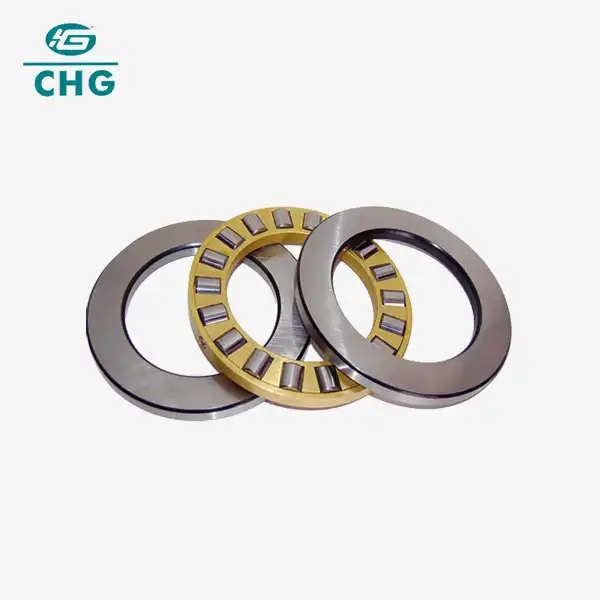 VIEW MORERoller Thrust Bearing
VIEW MORERoller Thrust Bearing -
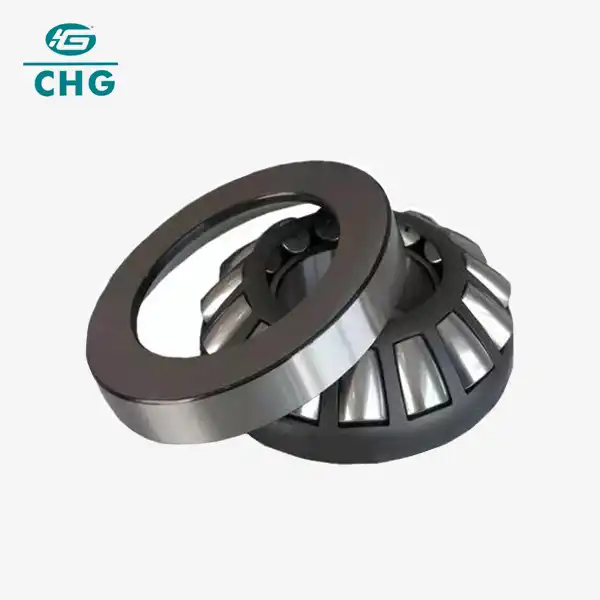 VIEW MORESelf Aligning Tapered Roller Bearing
VIEW MORESelf Aligning Tapered Roller Bearing -
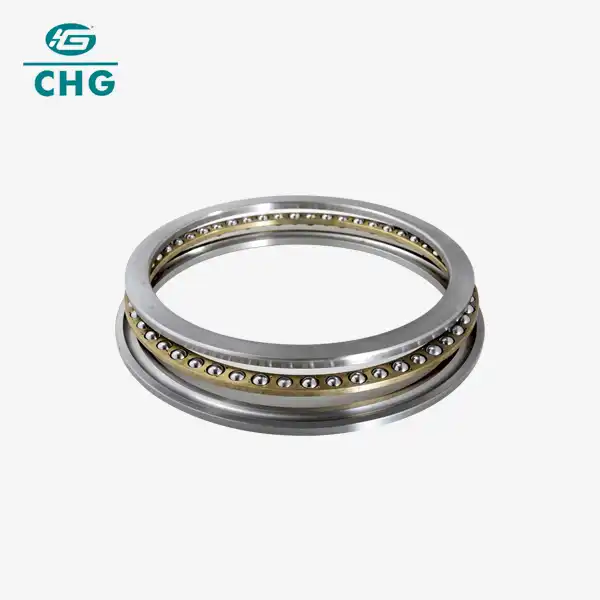 VIEW MOREAngular Contact Thrust Ball Bearing
VIEW MOREAngular Contact Thrust Ball Bearing -
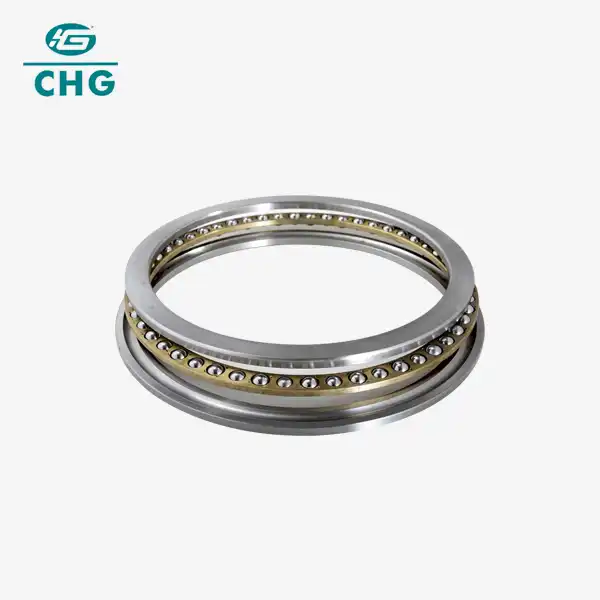 VIEW MOREAxial Ball Thrust Bearing
VIEW MOREAxial Ball Thrust Bearing -
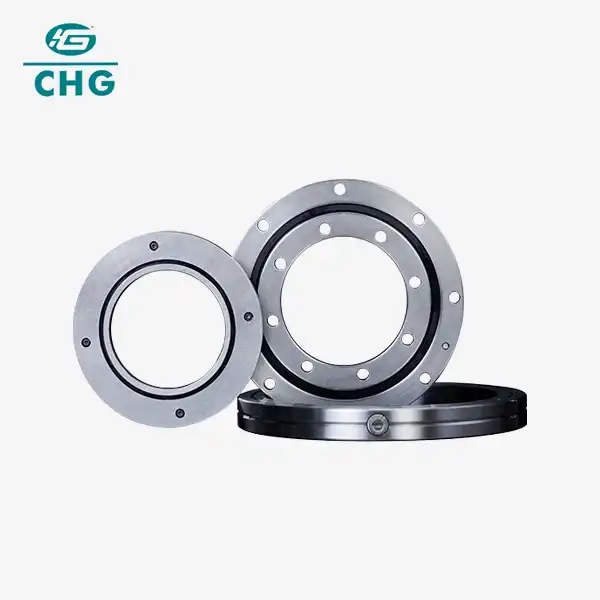 VIEW MOREHigh Rigidity Crossed Roller Bearing
VIEW MOREHigh Rigidity Crossed Roller Bearing -
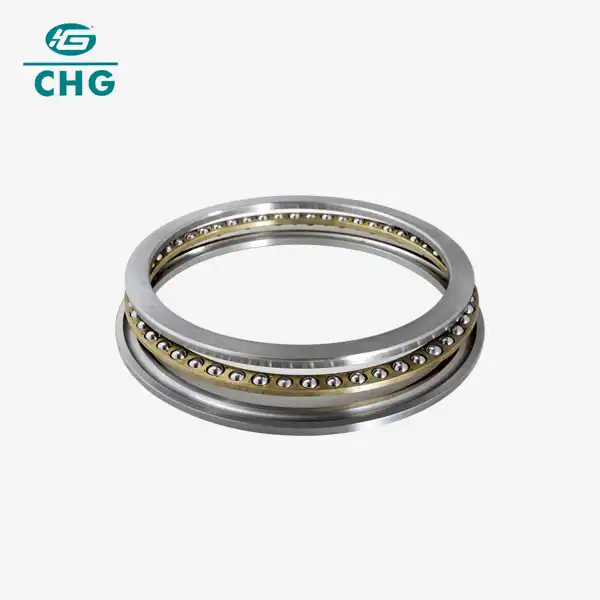 VIEW MORESingle Direction Thrust Ball Bearing
VIEW MORESingle Direction Thrust Ball Bearing -
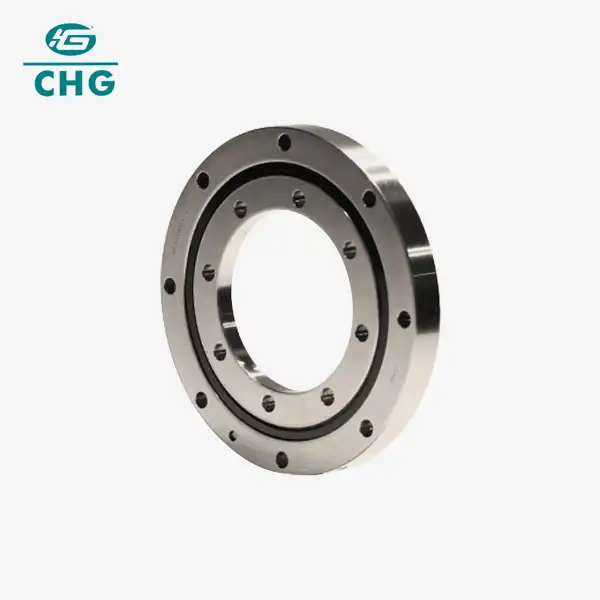 VIEW MOREHXU Cross Roller Bearings
VIEW MOREHXU Cross Roller Bearings -
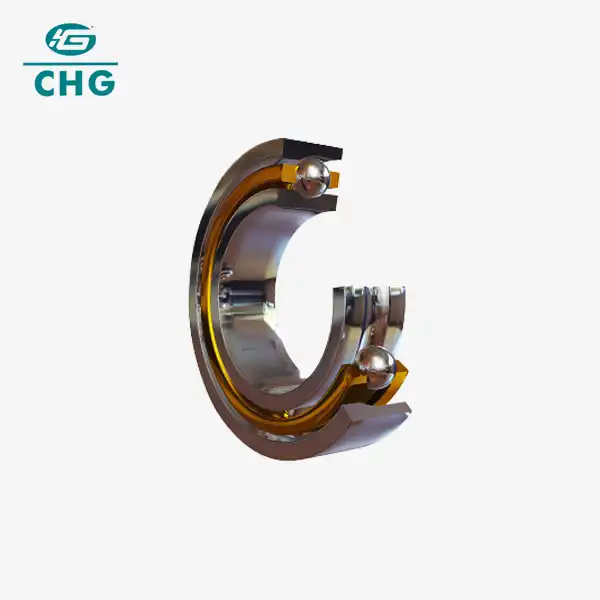 VIEW MOREDeep Groove Ball Bearing
VIEW MOREDeep Groove Ball Bearing
